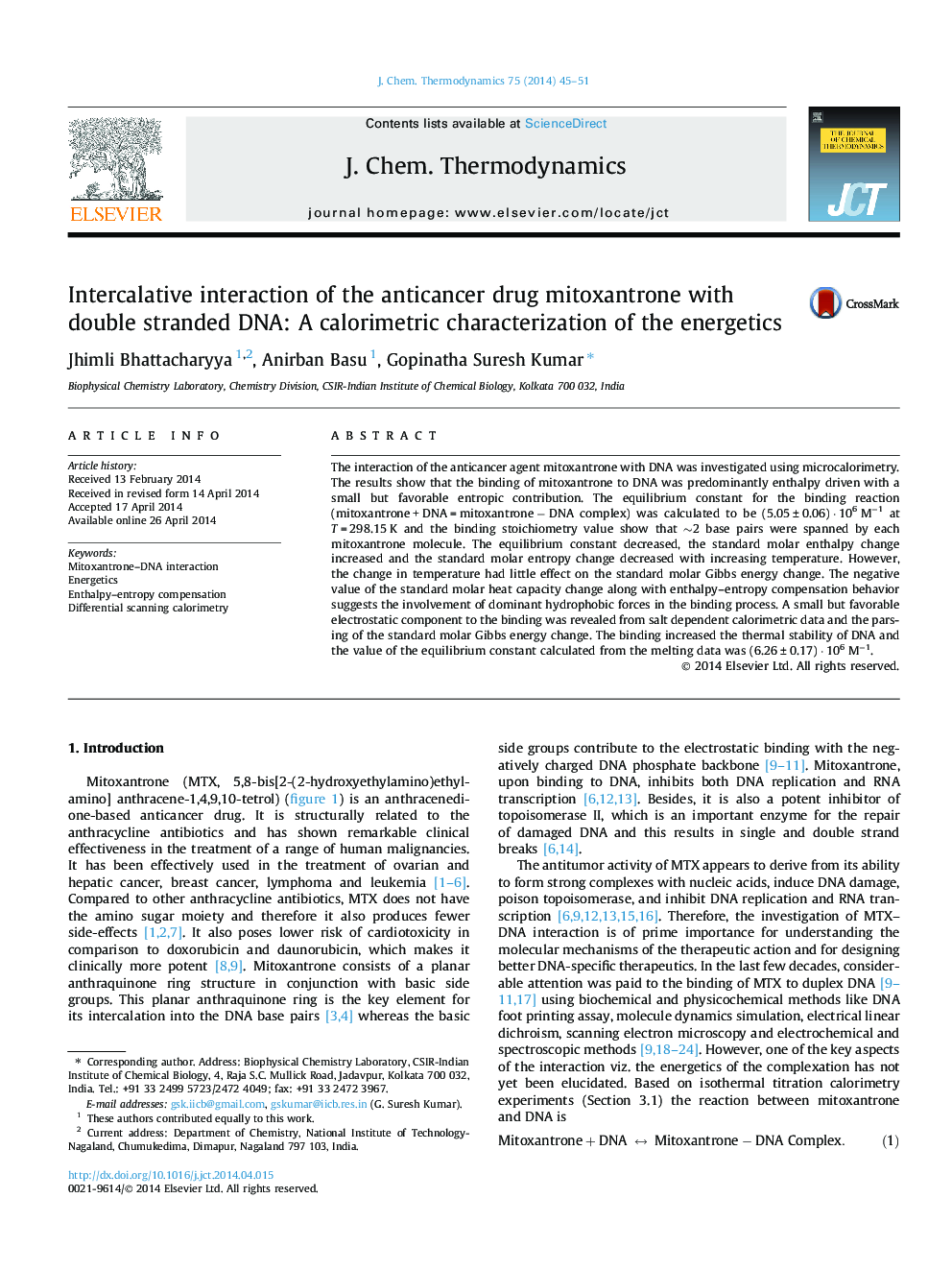| Article ID | Journal | Published Year | Pages | File Type |
|---|---|---|---|---|
| 215546 | The Journal of Chemical Thermodynamics | 2014 | 7 Pages |
•Mitoxantrone binds to ds DNA with equilibrium constant of the order of 106 M−1.•The binding was driven by large negative enthalpy and small positive entropy.•The binding was dominated by hydrophobic forces.•Mitoxantrone enhanced the thermal stability of DNA remarkably.
The interaction of the anticancer agent mitoxantrone with DNA was investigated using microcalorimetry. The results show that the binding of mitoxantrone to DNA was predominantly enthalpy driven with a small but favorable entropic contribution. The equilibrium constant for the binding reaction (mitoxantrone + DNA = mitoxantrone − DNA complex) was calculated to be (5.05 ± 0.06) · 106 M−1 at T = 298.15 K and the binding stoichiometry value show that ∼2 base pairs were spanned by each mitoxantrone molecule. The equilibrium constant decreased, the standard molar enthalpy change increased and the standard molar entropy change decreased with increasing temperature. However, the change in temperature had little effect on the standard molar Gibbs energy change. The negative value of the standard molar heat capacity change along with enthalpy–entropy compensation behavior suggests the involvement of dominant hydrophobic forces in the binding process. A small but favorable electrostatic component to the binding was revealed from salt dependent calorimetric data and the parsing of the standard molar Gibbs energy change. The binding increased the thermal stability of DNA and the value of the equilibrium constant calculated from the melting data was (6.26 ± 0.17) · 106 M−1.
